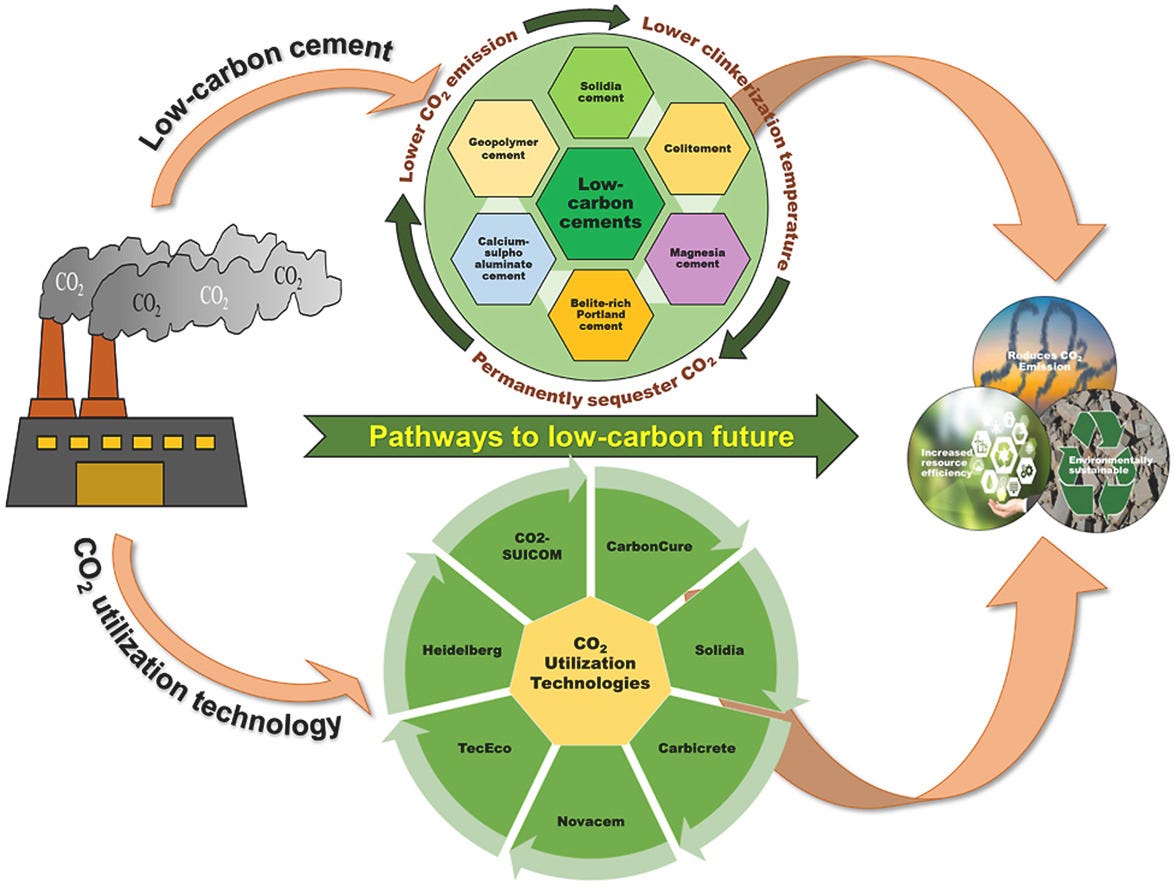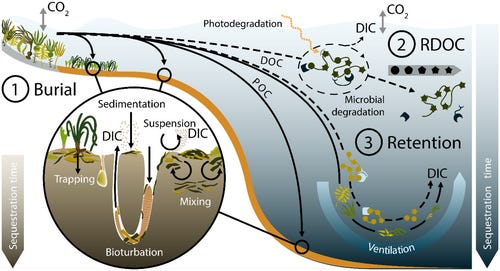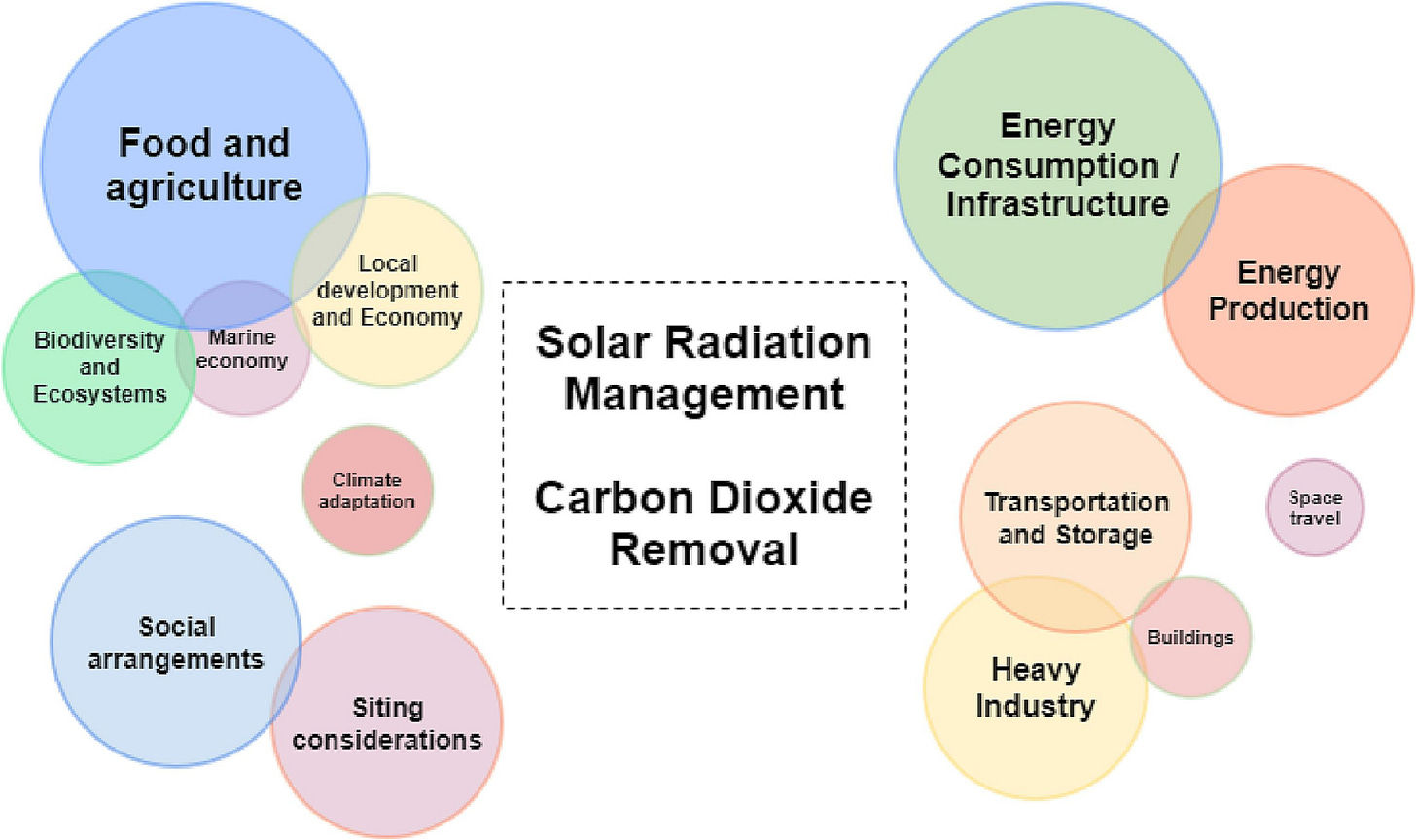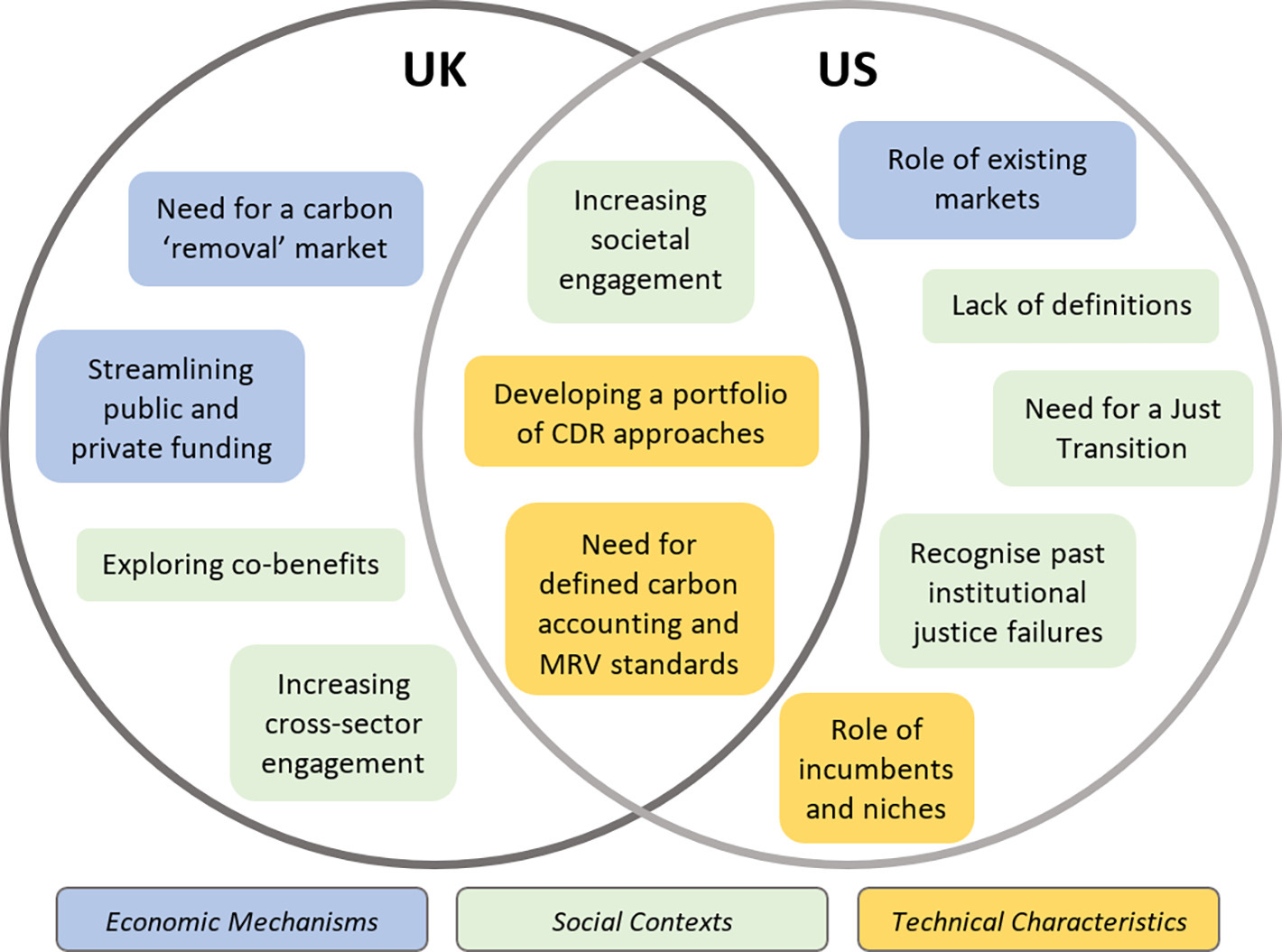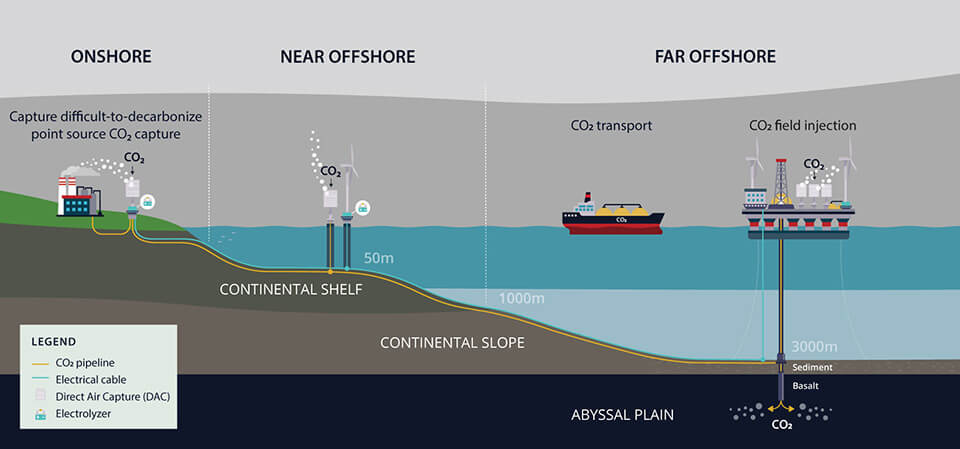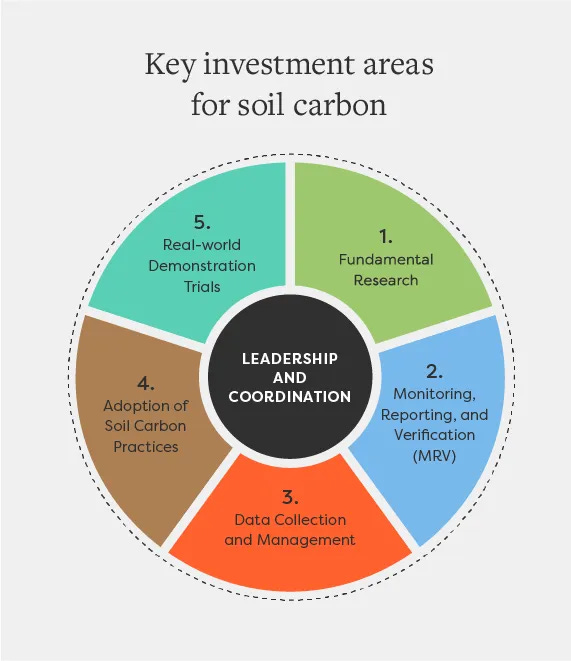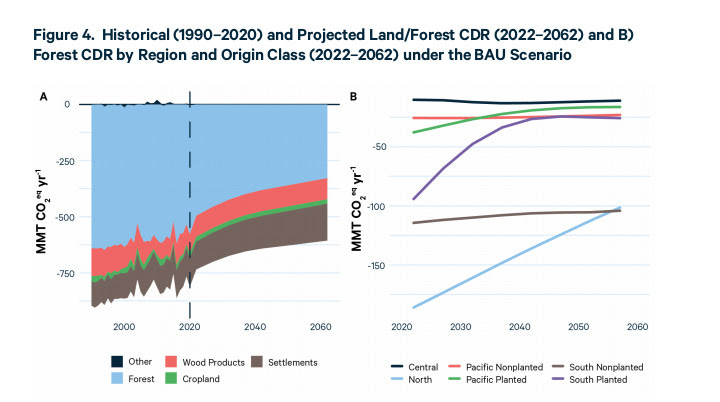WEEKLY SUMMARY (17 JULY-23 JULY 2023)-WEEK#22
Links to recent scientific papers, web posts, upcoming events, job opportunities, podcasts, and event recordings, etc. on Carbon Dioxide Removal Technology.
CONSULTATIONS
Call for input 2023 - structured public consultation: Further input - Removal activities under the Article 6.4 mechanism | Deadline: 1st August 2023
Call for input: Industrial Removal Certification Methodologies | Deadline: 15 September 2023
COMMERCIAL NEWS
Announcing Isometric’s $25m fundraise
AXA Commits $49M To Amazon Reforestation Project In Brazil
Vow ASA Secures Permits For $27M Biochar Project
RESEARCH PAPERS
Alternative, but expensive, energy transition scenario featuring carbon capture and utilization can preserve existing energy demand technologies
Sensitivity of the Global Ocean Carbon Sink to the Ocean Skin in a Climate Model
Carbon dioxide removal: climbing up the EU climate policy agenda
Enhanced weathering in the U.S. Corn Belt delivers carbon removal with agronomic benefits
Fault Slip Tendency Analysis for a Deep-Sea Basalt CO2 Injection in the Cascadia Basin
Low-CO2 emission strategies to achieve net zero target in cement sector
Global climate-change trends detected in indicators of ocean ecology
Carbon sequestration and climate change mitigation using macroalgae: a state of knowledge review
Methodologies for quantification of CO2 drawdown by enhanced weathering
Coupling for climate intervention: Sectoral and sustainability couplings for carbon removal and solar geoengineering pathways
Assessing carbon storage capacity and saturation across six central US grasslands using data–model integration
Soil carbon storage and compositional responses of soil microbial communities under perennial grain IWG vs. annual wheat
A Case Study of Carbon Sequestration Capacity at Heartfulness Campus, Yerla, Nagpur
Direct Air Capture and Integrated Conversion of Carbon Dioxide into Cyclic Carbonates with Basic Organic Salts
Emerging Technologies in Post-Combustion Carbon Dioxide Capture &Removal
The carbon costs of global wood harvests
Developing carbon dioxide removal policy and anticipatory perspectives in the United Kingdom and the United States
WEB POSTS
Earthquake risk minimal when storing carbon under the deep ocean, study finds
Isometric: a new carbon removal registry and science platform
A new soil carbon bill breaks ground
Carbon Business Council Grows to More Than 100 Companies, Uniting Innovators to Achieve a Gigaton-Scale Climate Impact
Climate Breakthrough: Brimstone’s Decarbonized Portland Cement First to Meet Essential Building Industry Standard, Unlocking the Potential of Net-Zero Construction
The European Sustainability Reporting Standards (ESRS) on net zero and why they matter
PURO.EARTH Listed Sawa EcoSolutions
The Amended Nature Restoration Law
CarbonCure Achieves AS1478.1 Certification
The Economist Group renews commitment to high-quality carbon dioxide removal
Strengthening Net Zero Claims
First Southern Hemisphere Direct Air Capture Plant Planned
The Case for Methane Removal
The role RockBLOCK 9603 plays in the removal of carbon from open oceans
How to kickstart the private sector biodiversity movement
King Tide Carbon Sign MOU with Springtide Seaweed
Aemetis Awarded The First CO2 Sequestration Characterization Well Permit Issued By The State Of California
REPORTS
Supercharging carbon removal: a focus on DAC technology
Prospects for Land Sector Carbon Dioxide Removal in the United States
THESIS
Feasibility study of implementing chemical looping combustion with BECCS: Process modeling and techno-economic analysis of a CHP plant at Skövde Energi
Action Levers towards Sustainable Wellbeing: Re-Thinking Negative Emissions, Sufficiency, Deliberative Democracy
DISCUSSIONS
“DAC not …a climate solution but a way to continue producing petroleum”
Scientific backing of Al Gore quote in July 18 NYT article?
Increasing ocean "greenness" = increasng natural mCDR?
Is Coastal Hardening an mCDR Opportunity?
CDR FIRMS
Mangrove
Uplift Geosystems
Yard Stick
SAWA
UPCOMING EVENTS
(NEW) Introduction: Carbon Removal & The Hudson Valley by OpenAir | 24 July 2023
Dr. Holly Jean Buck: Residual Emissions and the Climate Role of CDR by OpenAir | 25 July 2023
(NEW) Trustworthy and Inclusive Digital MRV by Airminers | 26 July 2023
Climate Action Deep dive | Exploring Carbon Removals: Technologies, Challenges, and Opportunities by South Pole | 26 July 2023
(NEW) Emerging Innovations at the Ocean-Climate Nexus: Shore to Sea by Ocean-Climate Solutions Innovation Exchange | 27 July 2023
(NEW) AirMiners Kiloton Fund FAQ by Airminers | 01 August 2023
Ocean acidification indicators and NOAA’s Marine Carbon Dioxide Removal draft strategy by GOA-ON | 2 August 2023
(NEW) [C]Worthy: Building Tools for Safe, Effective, and Verifiable Marine CDR by OpenAir | 05 September 2023
Meet Climeworks at Climate Week NYC 2023 | 17-24 September 2023
Third Annual Carbon Dioxide Removal Law & Policy Conference, Carbon Removal Deployment: Law and Policy from Planning to Project by the Institute for Carbon Removal Law & Policy | 26 September 2023
The Carbon Removal Business Summit Comes to London by Carbon Unbound London | 03 & 04 October 2023
First educational conference on CO₂ removal by CDRterra | 10-11 October 2023
JOB OPPORTUNITIES
Programme officer at UNFCCC in Regulatory Framework Implementation Subdivision, the article 6.4 group, Paris Agreement | Bonn, Germany | Deadline 28th July
Senior Software Engineer at Mangrove | Remote, North America
“Mangrove carbon is a Carbon Management Infrastructure for Carbon Dioxide Removal & Carbon Capture and Storage.”
Various Job Openings at Isometric | US, UK:
“Isometric is a carbon removal registry and science platform.”
PhD position: Understanding challenges in the Science-Policy interface of soil-based Carbon Dioxide Removal (CDR) technologies at Wageningen University & Research | Deadline: 02 October 2023
Project Manager: State of Carbon Dioxide Removal at University of Oxford | Deadline: 30 August 2023
“This is an exciting opportunity to be at the heart of the ground-breaking State of Carbon Dioxide Removal (CDR) project that aims at providing reliable, independent and scientific data for tracking and assessing the development of CDR around the world. It is an international collaboration led by experts at the University of Oxford, MCC Berlin, SWP Berlin, the University of Wisconsin and IIASA. The first edition report has received international acclaim and media attention, and is influencing key decision makers in climate action across policy and industry.”
Postdoctoral Research Scholar - Biological & Agricultural Engineering | Raleigh, NC
“The Department of Biological and Agricultural Engineering at North Carolina State University invites applications for a full-time postdoctoral research associate to work with Dr. Joe Sagues in the area of techno-economic and life cycle assessment of carbon-negative bioprocessing technologies. The initial appointment will be for one year, with the possibility for extension.”
Assistant Professor, Associate Professor, Professor at University of Chicago: Physical Sciences Division | Chicago, IL
“Climate Systems Engineering will apply insights from systems engineering and climate systems science to study technologies that might reduce the risks of accumulated greenhouse gases. The mix of specific research topics will evolve as the initiative matures driven by the interests of collaborating researchers and by policy-relevant questions posed by governments and civil society. The scope includes solar geoengineering from modification to surface albedo to space-based systems; open-systems carbon removal such as enhanced rock weathering and related methods of ocean carbon removal; and local interventions to reduce glacial melting. Disciplinary research will be complemented by systems analysis including techno-economic assessment, decision and risk analysis, and integrated assessment.”
Senior Electrochemical Engineer at Uplift Geosystems | Halethorpe, MD
“Uplift Geosystems is elevating the natural power of rocks to responsibly remove carbon and produce metals.”
Marketing Communications Manager at Carbonfuture | Remote, US
“We track carbon from the air to the ground.
We translate from carbon removal into credit.
We trade carbon removal credits to companies.”
Mechanical Engineer at Yard Stick | Oakland, CA
“Yard Stick designs & builds soil probes to measure Carbon Sequestration in cropping and grazing lands.”
Marine Scientist at ebbcarbon | SAN CARLOS
“Ebb Carbon is a climate and ocean-health restoration company. Our mission is to remove gigatons of CO2 from the air, while reducing ocean acidification to restore a healthier planet for generations to come. We remove carbon dioxide from the air by accelerating the ocean’s natural ability to capture and durably store carbon dioxide. Our electrochemical approach reduces ocean acidity and has the potential to be one of the largest scale and lowest cost approaches to removing excess CO2.”
PODCASTS
Global Policy Roundup | Carbon Removal Newsroom
“Zimbabwe’s government has announced new regulations on voluntary carbon offset trading to prevent greenwashing and ensure that local communities benefit. Carbon credit schemes in Zimbabwe have been unregulated. The new policy mandates that all carbon projects register with the program, ensuring that a percentage of the revenue goes directly to local communities.
Deforestation rates in Brazil’s Amazon rainforest have fallen by 33.6% during the first six months of 2023 under the new administration of President Luiz Inácio Lula da Silva. This contrasts sharply with the record-breaking deforestation rates in 2022 under former president Jair Bolsonaro, who promoted mining and farming in protected areas.
The UK government has announced comprehensive changes to its Emissions Trading Scheme: a program designed to decarbonize the country eventually. The ETS will now include more sectors, set new emissions limits for the power sector, energy-intensive industries, and aviation, and incorporate carbon removal technologies into the ETS. CDR solutions, like direct air capture, BECCs, and nature-based removals, will now be traded in the ETS program.”
The good and bad of carbon capture | Catalyst with Shayle Kann
“Carbon capture and storage. It’s a controversial tool in the energy transition that we don’t want to use, but probably have to. Most of the scenarios in the IPCC’s Sixth Assessment Report include capturing and storing hundreds of gigatons of carbon dioxide between now and 2100. When people say carbon capture and storage, or CCS, they often mean different things. It’s a term that covers multiple technologies used to capture CO2—such as point-source and direct-air capture— and different approaches to using that CO2. With the CCS industry is in its infancy, tackling some big questions now could save us headaches down the road. Questions about CCS infrastructure use, where we’ll build it, and who will control it. In this episode, Shayle talks to Dr. Emily Grubert, associate professor of sustainable energy policy at the University of Notre Dame. She posted a Twitter thread recently about how the same CCS infrastructure actually has four different use cases: Avoiding emissions to extend the life of fossil-fuel infrastructure Avoiding emissions where we don’t have zero-carbon alternatives yet, like cement production Removing carbon to compensate for other emissions, i.e. offsets Removing carbon to draw down legacy emissions and avoid overshooting 1.5 degrees Celsius targets They walk through each categories and cover topics like: Which categories to prioritize over others Avoiding the double-counting problem Where we should use CCS vs. zero-carbon alternatives The resource constraints on CCS, including water, land and energy Whether we have the luxury to prioritize when we need to deploy CCS so quickly Whether CCS customers or regulatory bodies should determine the type of CCS infrastructure we have and where we build it.”
YOUTUBE VIDEOS
Rockdust spreading to mitigate climate change and boost crop yields (Plynlimon demonstrator) | UK Centre for Ecology & Hydrology
“Adding crushed rock dust to farmland has the potential to remove and lock up large amounts of carbon dioxide from the atmosphere. In the first trial of Enhanced Rock Weathering on upland grasslands in the world, UKCEH scientists applied 56 tonnes of finely ground basalt rock from quarries to three hectares of farmland in Plynlimon, Powys in May 2023 and will repeat this at the same time in 2024.
The basalt rock dust particles, which are less than 2mm in size, absorb and store carbon at faster rates than occur with the breaking down, or weathering of the naturally occurring rocks at the sites, reducing the timescale from decades to just months.”
Running Tide Talks: Responsible Sourcing Strategy | Running Tide
“Join us in this conversation, where we discuss the importance of responsible sourcing of materials for our carbon removal efforts.”
This Is CDR Ep. 75: Mati - Enhanced Weathering in the Global South with Shantanu Agarwal, CEO | OpenAir
“In this episode of This Is CDR we welcome back Mati Founder Shantanu to discuss how his new non-profit seeks to scale long duration carbon removal via enhanced weathering (EW) in partnership with smallholder farmers in India and other regions of the Global South.”
The state of standards in the voluntary carbon market
“In this webinar, you’ll learn:
-Where and how various standards bodies are converging
-What additional guidelines and protocols to anticipate
-How to engage with the VCM now in a way that enables compliance for the future”
Biocarbon Utilization and Sequestration Lab | Assistant Professor Joe Sagues | NC State Biological & Agricultural Engineering
“The Biocarbon Utilization and Sequestration Lab is located within the NC State University Department of Biological and Agricultural Engineering.
For more details on the Lab visit:
https://www.sagueslab.com/
For more info on Bio & Ag Engineering programs visit:
https://bae.ncsu.edu”





